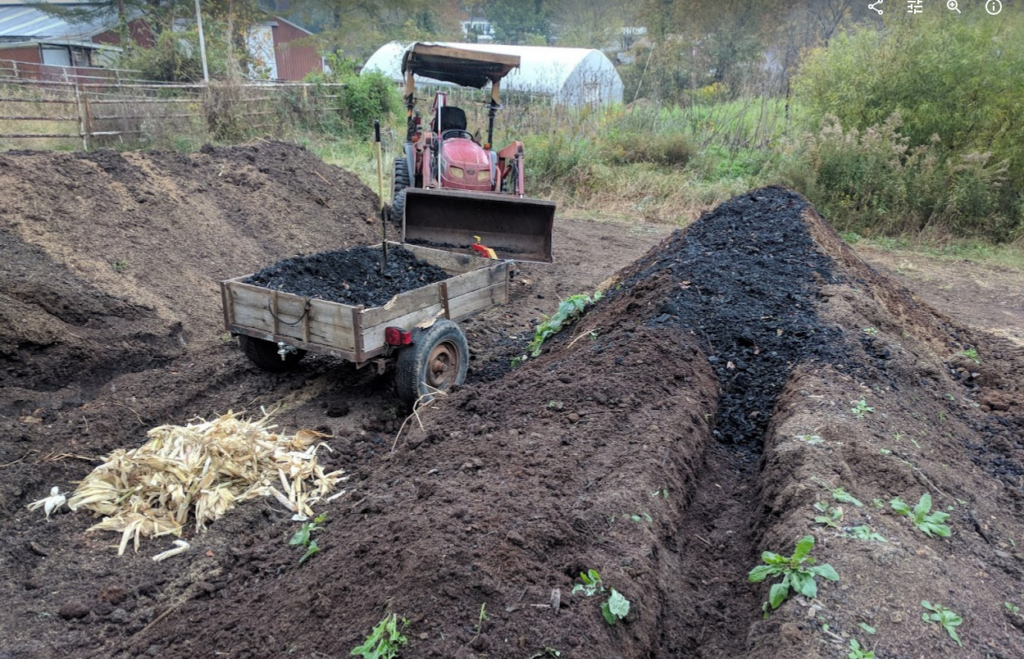There are literally thousands of ‘how to’ compost videos on youtube, and every other farm blog seems to have it’s own take on what you can or can’t, should or shouldn’t do… I find a lot of the ‘rules’ a bit of a storm in a teacup, so here’s our take.

If you want to get high tech with it, knock your self out, check out the links below. If you can’t be bothered other than to dump kitchen scraps in a corner of your yard, that’s ok too (though you’ll be much happier if you put a few handfuls of leaves on top each time you take out your kitchen scraps). Either way you’re keeping organic matter out of the land fill and creating a biologically rich amendment for your garden or farm. As Nicole Masters says, ‘the elixir of life comes out of a worm’s butt’ so if you see worms in your pile, you’re doing something right.
The Johnson-Su Bioreactor
The best research we’ve found about developing fugal dominant compost so far has come out of Dr. David Johnson and his wife Hui-Chun Su who developed the ‘Johnson-Su Bioreactor’: https://www.nmhealthysoil.org/2021/04/18/johnson-su-bioreactor-2/
This passively aerated static pile involves very little work once setup and produces a great compost, almost regardless of what you put into the pile as long as you build it right, keep it moist, and add some worms after the thermophilic stage. Since discovering this method, we’re converting our larger, turned piles at the farm into static aerated piles to reduce fossil fuel use and tractor time, while producing a more fungal dominant compost, using a setup similar to what can be seen in this video:
https://www.youtube.com/watch?v=JGxSDhnvUUc
Charles Dowding also has a great setup for his operation in England:
https://charlesdowding.co.uk/advice-on-making-compost/
The bottom line is, everyone that produces an organic ‘waste’ stream ought to turn it into a resource by putting it in a compost pile. More and more, the important role of fungi in biological systems is being recognized so building your compost piles to encourage their development will serve you well. Different crops thrive with different fungal/bacterial ratios, here’s one deep dive, see what else you can find specific to your context on scholar.google.com:
“The molecular characteristics of compost affect plant growth,
arbuscular mycorrhizal fungi, and soil microbial
community composition”
https://link.springer.com/content/pdf/10.1007/s00374-015-1046-8.pdf
For a visual of how we build our compost piles, both at the farm, and at home (two radically different methods) check out these videos:
Small Farm Scale Hot Compost:




